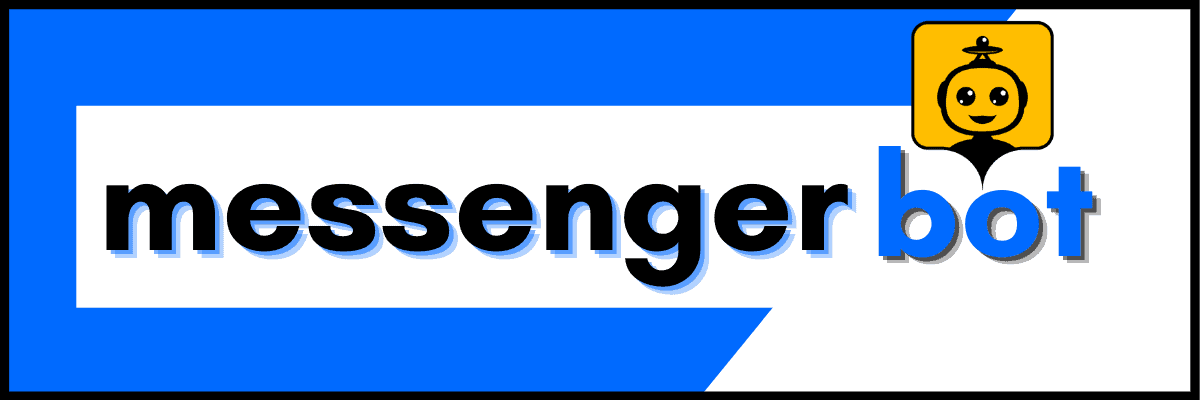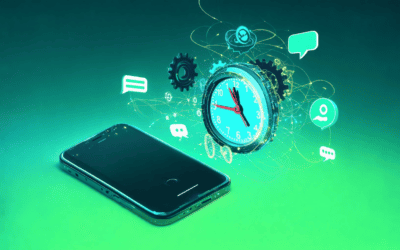Key Takeaways
- Mastering chatbot conversation flow is essential for enhancing user interaction and satisfaction.
- Utilizing natural language processing (NLP) improves user intent recognition, leading to better engagement.
- Personalization of chatbot responses based on user data increases overall user satisfaction.
- Implementing structured dialogue management ensures coherent and relevant conversations.
- Regular testing and iteration based on user feedback enhance chatbot performance and usability.
- Using a chatbot conversation flow template can streamline the design process and improve user experience.
In the rapidly evolving landscape of digital communication, mastering chatbot conversation flow is essential for businesses aiming to enhance user interaction and satisfaction. This article, titled Mastering Chatbot Conversation Flow: A Comprehensive Example and Template for Seamless User Interaction, delves into the intricacies of creating effective conversational flows that not only engage users but also drive meaningful interactions. We will explore what conversational flow means in the context of chatbots, highlighting its importance and the key elements that contribute to a successful design. Additionally, you will learn how to craft engaging chatbot conversations, utilize a chatbot conversation flow template Excel for streamlined design, and map user behavior to enhance interaction. By the end of this article, you will have a comprehensive understanding of the conversational AI process and best practices for ensuring smooth conversation flow, supported by practical examples and templates to elevate your chatbot development efforts.
What is conversational flow in chatbot?
Conversational flow in a chatbot refers to the seamless and intuitive progression of dialogue between the user and the chatbot. It is essential for creating an engaging and effective user experience. A well-designed conversational flow ensures that interactions feel natural, allowing users to communicate their needs without confusion or frustration. Here are key components to consider for creating a smooth chatbot conversation flow:
Understanding the Importance of Conversational Flow in Chatbots
- Understanding User Intent: Utilize natural language processing (NLP) to accurately interpret user queries. This involves recognizing keywords and context to respond appropriately. Research shows that effective intent recognition can significantly enhance user satisfaction (Kumar et al., 2021).
- Structured Dialogue Management: Implement a structured approach to manage conversations. This can include predefined paths for common queries and dynamic responses for more complex interactions. A study by McTear (2017) emphasizes the importance of dialogue management in maintaining conversational coherence.
- Personalization: Tailor responses based on user data and previous interactions. Personalization can increase engagement and make users feel valued. According to a report by Salesforce (2022), 70% of consumers expect personalized experiences from chatbots.
- Feedback Mechanisms: Incorporate options for users to provide feedback on their experience. This can help refine the chatbot’s responses and improve the overall flow. Research indicates that continuous learning from user interactions leads to better conversational outcomes (Bock et al., 2020).
- Error Handling: Design the chatbot to gracefully handle misunderstandings or errors. Providing clarifying questions or alternative options can help redirect the conversation effectively. A well-implemented error recovery strategy is crucial for maintaining user trust (Huang et al., 2021).
- Testing and Iteration: Regularly test the chatbot with real users to identify pain points in the conversation flow. Iterative improvements based on user feedback and analytics can enhance performance over time.
By focusing on these components, developers can create chatbots that not only facilitate smooth conversations but also enhance user satisfaction and engagement. For further insights, refer to Brain Pod AI Help Center and the latest findings in chatbot research from journals like the Journal of Artificial Intelligence Research.
Key Elements of Effective Chatbot Conversation Flow
To ensure a successful chatbot interaction, several key elements must be integrated into the conversation flow:
- Clarity: Ensure that the chatbot’s language is clear and concise, avoiding jargon that may confuse users.
- Context Awareness: The chatbot should maintain context throughout the conversation, allowing for more meaningful interactions.
- Response Time: Quick response times are crucial for keeping users engaged and satisfied with the interaction.
- Visual Elements: Incorporate visual aids, such as buttons or quick replies, to guide users through the conversation.
- Integration with Other Tools: Ensure that the chatbot can seamlessly connect with other platforms and services, enhancing its functionality.
By implementing these elements, businesses can create a more effective chatbot that meets user needs and expectations. For more information on chatbot features, visit explore Messenger Bot capabilities.

How do you make a chatbot conversation?
Steps to Create Engaging Chatbot Conversations
To create an effective chatbot conversation, follow these structured steps:
- Define the Purpose: Clearly outline the objectives of your chatbot. Determine whether it will provide customer support, facilitate sales, or engage users in conversation.
- Choose a Platform: Select a chatbot development platform that suits your needs, such as Dialogflow, Chatfuel, or ManyChat. These platforms offer user-friendly interfaces and integration capabilities.
- Design the Conversation Flow: Map out the conversation paths. Use flowcharts to visualize user interactions and responses. Consider common questions and scenarios to ensure comprehensive coverage.
- Create Intents and Entities: In platforms like Dialogflow, define intents (user intentions) and entities (specific data points). This helps the chatbot understand user inputs accurately.
- Train Your Chatbot: Input sample phrases for each intent to train the chatbot. The more diverse the training data, the better the chatbot will understand variations in user queries.
- Test and Iterate: Use testing tools provided by the platform to simulate conversations. Gather feedback and refine the conversation flow based on user interactions.
- Integrate with Your Website: Create and configure your chat widget to embed on your website. Customize its appearance to align with your brand identity.
- Set Up Greetings and Responses: Program initial greetings and common responses to enhance user engagement. Personalize these messages to create a welcoming atmosphere.
- Monitor Performance: After deployment, continuously monitor chatbot interactions. Use analytics to assess performance and identify areas for improvement.
- Stay Updated: Keep abreast of the latest trends in chatbot technology and user preferences. Regularly update your chatbot to enhance its capabilities and user experience.
For further insights, refer to resources like the Chatbot Handbook by the Chatbot Association and research articles from the Journal of Artificial Intelligence Research.
Utilizing a Chatbot Conversation Flow Template Excel for Design
Using a chatbot conversation flow template Excel can significantly streamline the design process. This template allows you to visually organize the conversation paths and user interactions, making it easier to identify potential gaps in the flow. By mapping out the conversation in Excel, you can easily adjust and iterate on the design, ensuring a more engaging user experience.
Additionally, integrating this template with your chatbot development platform can enhance collaboration among team members, allowing for real-time updates and feedback. This approach not only improves the efficiency of the design process but also ensures that the final product aligns with user expectations and business goals.
What is the User Flow of a Chatbot?
The user flow of a chatbot refers to the structured sequence of interactions that guide users through a conversation, ultimately helping them achieve specific objectives such as resolving issues, completing tasks, or obtaining information. Understanding and designing effective chatbot flows is crucial for enhancing user experience and ensuring that interactions are seamless and efficient.
Mapping the User Flow in Chatbot Design
Mapping the user flow in chatbot design involves several key steps to ensure that the conversation is intuitive and user-friendly. Here are the essential components:
- Understanding User Intent: The first step in a chatbot flow is to accurately identify the user’s intent. This can be achieved through natural language processing (NLP) techniques, which analyze user inputs to determine their needs. Research shows that effective intent recognition significantly improves user satisfaction.
- Greeting and Introduction: Upon initiating a conversation, the chatbot should greet the user warmly and introduce its capabilities. This sets a positive tone and informs users about what they can expect from the interaction.
- Guided Navigation: Chatbot flows often include predefined paths that guide users through various options. For instance, a user may be presented with buttons or quick replies to choose from, which simplifies decision-making and enhances user engagement.
- Information Gathering: As the conversation progresses, the chatbot may need to collect specific information from the user. This can include asking clarifying questions to ensure accurate responses, such as details about a technical issue.
- Providing Solutions: Once the necessary information is gathered, the chatbot can offer solutions or direct users to relevant resources, including answering frequently asked questions or connecting users to human agents if needed.
- Feedback Loop: After delivering a solution, it’s beneficial to ask for user feedback. This not only helps improve the chatbot’s performance but also enhances user satisfaction by showing that their opinions are valued.
- Closure and Follow-Up: Finally, the chatbot should conclude the conversation politely, offering further assistance if needed. Follow-up messages can also be sent to ensure the user’s issue was resolved satisfactorily.
Analyzing User Behavior to Enhance Chatbot Interaction
To enhance chatbot interaction, analyzing user behavior is essential. By understanding how users interact with the chatbot, businesses can refine the conversation flow and improve overall engagement. Here are some strategies to consider:
- Tracking Interaction Patterns: Monitor how users navigate through the chatbot. Identifying common paths can help in optimizing the flow and making it more intuitive.
- Identifying Drop-off Points: Analyze where users tend to exit the conversation. This can indicate areas where the flow may be confusing or unengaging, allowing for targeted improvements.
- Utilizing A/B Testing: Implement different conversation flows and test them with users to see which performs better. This data-driven approach can lead to significant enhancements in user satisfaction.
- Incorporating User Feedback: Regularly solicit feedback from users about their experience. This can provide valuable insights into what works well and what needs adjustment.
By mapping the user flow effectively and analyzing user behavior, we can create a more engaging and efficient chatbot experience. For more insights on chatbot design, explore our chatbot tutorials and learn how to set up your first AI chatbot in less than 10 minutes with Messenger Bot.
What is the flow of the conversational AI process?
The flow of the conversational AI process involves several key stages that integrate natural language processing (NLP) and machine learning (ML) to create an interactive and responsive user experience. Here’s a detailed breakdown of the process:
- Input Processing: The user initiates a conversation by inputting text or voice commands. The conversational AI system captures this input for analysis.
- Natural Language Understanding (NLU): The system employs NLU to interpret the user’s intent and extract relevant entities from the input. This step is crucial for understanding context and meaning, allowing the AI to respond appropriately.
- Dialogue Management: Once the intent is understood, the dialogue management component determines the best course of action. It maintains the context of the conversation, ensuring that responses are coherent and relevant to previous exchanges.
- Response Generation: The AI generates a response based on the processed input and dialogue context. This can involve retrieving information from databases, generating text using predefined templates, or employing machine learning models to create dynamic responses.
- Natural Language Generation (NLG): In this phase, the AI converts structured data into human-readable text. NLG ensures that the response is not only accurate but also engaging and contextually appropriate.
- Feedback Loop: After delivering the response, the system collects user feedback, which is essential for continuous improvement. This feedback is analyzed to refine the NLU and NLG processes, enhancing the AI’s performance over time.
- Machine Learning Integration: The conversational AI utilizes machine learning algorithms to learn from interactions. This allows the system to adapt to user preferences and improve its accuracy in understanding and responding to queries.
- Deployment and Monitoring: Finally, the conversational AI is deployed across platforms (such as websites, messaging apps, or customer service portals) and continuously monitored to ensure optimal performance and user satisfaction.
By leveraging these stages, conversational AI systems can provide personalized and efficient interactions, significantly enhancing user experience.
Integrating AI Technologies into Chatbot Conversation Flow
Integrating AI technologies into chatbot conversation flow is essential for creating a seamless user experience. Here are some key strategies to consider:
- Utilize Advanced NLP Techniques: Implementing sophisticated NLP algorithms allows chatbots to better understand user intent and context, leading to more accurate responses.
- Incorporate Machine Learning: By employing machine learning, chatbots can learn from past interactions, improving their ability to predict user needs and preferences over time.
- Leverage Pre-built AI Models: Using pre-built models from platforms like Brain Pod AI can accelerate development and enhance the chatbot’s capabilities without extensive programming.
- Continuous Monitoring and Optimization: Regularly analyzing user interactions helps identify areas for improvement, ensuring the chatbot evolves to meet user expectations effectively.
For businesses looking to enhance their chatbot capabilities, exploring a variety of features offered by Messenger Bot can provide valuable insights into optimizing conversation flows.

What is a Conversational Flow?
A conversational flow refers to the seamless and natural progression of dialogue between individuals, characterized by a comfortable exchange of ideas and emotions. It is essential for effective communication and social interaction, allowing participants to engage meaningfully without awkward pauses or misunderstandings. In chatbot development, understanding conversational flow is crucial for creating engaging and user-friendly interactions.
Defining Conversational Flow in Chatbot Development
In the context of chatbot development, conversational flow encompasses the structure and design of interactions that guide users through a dialogue. This involves anticipating user needs, providing relevant responses, and ensuring that the conversation feels intuitive. Key elements that contribute to a strong conversational flow include:
- Active Listening: Engaging fully with what the user is saying, demonstrating interest through appropriate responses. This enhances empathy and connection, making users feel understood.
- Turn-Taking: Smooth transitions between user prompts and bot responses help maintain the rhythm of conversation, fostering a dynamic interaction.
- Open-Ended Questions: These encourage elaboration and deeper discussion, allowing the conversation to flow naturally. For example, asking “What do you think about this topic?” invites more extensive responses.
- Shared Interests: Finding common ground can significantly enhance conversational flow, as discussing mutual interests creates a sense of connection.
- Non-Verbal Communication: In digital interactions, this translates to using emojis, GIFs, or images to convey emotions and enhance engagement.
Best Practices for Designing Conversational Flows
To create effective chatbot conversation flows, consider the following best practices:
- Utilize a Chatbot Conversation Flow Template Excel: This tool can help visualize and organize the flow of conversation, ensuring that all potential user interactions are accounted for.
- Test and Iterate: Regularly test your chatbot with real users to identify areas for improvement. Gathering feedback can help refine the conversational flow and enhance user satisfaction.
- Incorporate AI Technologies: Leveraging AI can enhance the chatbot’s ability to understand and respond to user queries more naturally, improving overall interaction quality.
- Monitor Analytics: Use analytics to track user interactions and identify patterns. This data can inform adjustments to the conversational flow, making it more effective over time.
How do you have a good conversation flow?
Creating a smooth conversation flow in chatbots is essential for enhancing user engagement and satisfaction. A well-structured conversation flow not only guides users through their interactions but also ensures that they feel understood and valued. Here are some effective tips for ensuring a seamless conversation flow in your chatbot:
Tips for Ensuring Smooth Conversation Flow in Chatbots
- Ask Open-Ended Questions: Encourage deeper dialogue by asking questions that require more than a yes or no answer. For instance, instead of asking, “Did you enjoy the service?” try “What did you think about our service experience?” This invites users to share their thoughts and feelings, fostering a richer interaction.
- Practice Active Listening: Show genuine interest by acknowledging user inputs. Use affirmations like “I see” or “That’s interesting.” This demonstrates that you value their feedback, leading to a more engaging exchange.
- Avoid Controversial Topics: Steer clear of sensitive subjects that could disrupt the flow of conversation. Keeping interactions light and relevant helps maintain a comfortable atmosphere.
- Use Positive Language: The tone of your responses matters. Employ friendly and encouraging language to make users feel at ease and more willing to engage.
- Provide Relevant Information: Ensure that the chatbot delivers information that is pertinent to the user’s inquiries. This keeps the conversation focused and meaningful.
- Maintain a Balanced Dialogue: Ensure that the conversation is not one-sided. Share insights while inviting users to contribute, keeping the interaction dynamic.
- Adapt to User Preferences: Pay attention to user responses and adjust the conversation flow accordingly. If a user shows interest in a specific topic, delve deeper into that area.
- End on a Positive Note: Conclude interactions with a friendly remark or a summary of the discussion. For example, “I enjoyed our chat about your preferences; feel free to reach out anytime!” This leaves the door open for future interactions.
Utilizing Conversation Chatbot Flow Diagrams for Clarity
To effectively design and visualize your chatbot’s conversation flow, utilizing a chatbot conversation flow template Excel can be incredibly beneficial. These diagrams help map out the various paths users can take during their interactions, ensuring that all potential scenarios are accounted for. Here’s how to leverage these diagrams:
- Visualize User Journeys: Create flow diagrams that outline different user paths based on their responses. This helps in identifying potential bottlenecks and optimizing the flow.
- Test Scenarios: Use the diagrams to simulate conversations and test various scenarios. This allows you to refine the flow before deploying the chatbot.
- Collaborate with Teams: Share the flow diagrams with your team for feedback and suggestions. Collaborative input can lead to a more robust conversation design.
By implementing these strategies and utilizing conversation flow diagrams, you can significantly enhance the effectiveness of your chatbot, leading to improved user satisfaction and engagement. For more insights on chatbot design, check out our features of Messenger Bot and explore how we can help you create engaging chatbot experiences.
Best Chatbot Conversation Flow Example
Analyzing a Free Chatbot Conversation Flow Example
To understand the effectiveness of a chatbot, examining a free chatbot conversation flow example can provide valuable insights. A well-structured flow typically begins with a greeting, followed by a series of questions designed to guide the user through their inquiry. For instance, a simple flow might start with, “Hello! How can I assist you today?” This initial prompt sets the tone for the interaction and encourages user engagement.
Following the greeting, the chatbot can present options based on common user queries, such as:
- Product Information
- Order Status
- Technical Support
Each option can lead to a tailored response, ensuring that users receive relevant information quickly. Additionally, incorporating fallback responses for unrecognized inputs enhances user experience by keeping the conversation flowing smoothly. This structure not only improves user satisfaction but also increases the likelihood of successful interactions.
Exploring a Comprehensive Chatbot Flow Builder for Customization
Utilizing a comprehensive chatbot flow builder allows businesses to customize their chatbot conversation flows effectively. These tools often come with templates that can be modified to suit specific business needs. For example, a Messenger Bot flow builder enables users to create dynamic workflows that respond to user actions, enhancing engagement through personalized interactions.
Key features of a robust chatbot flow builder include:
- Drag-and-drop interface for easy flow design
- Integration with various messaging platforms
- Analytics tools to track user interactions and optimize flows
By leveraging these capabilities, businesses can create a chatbot that not only meets user expectations but also adapts to changing needs. For those looking to get started, a quick AI chatbot setup guide can provide essential steps to launch an effective chatbot solution.




